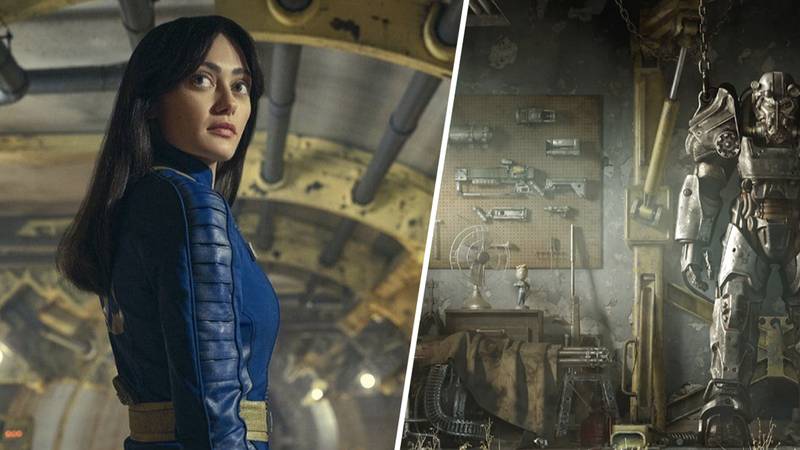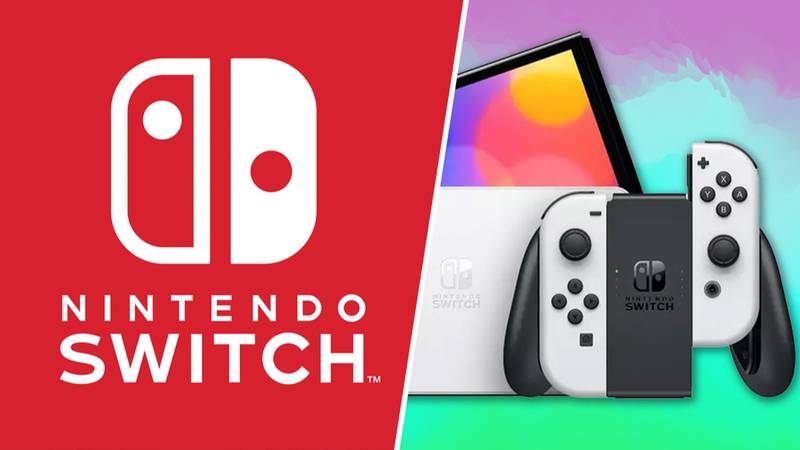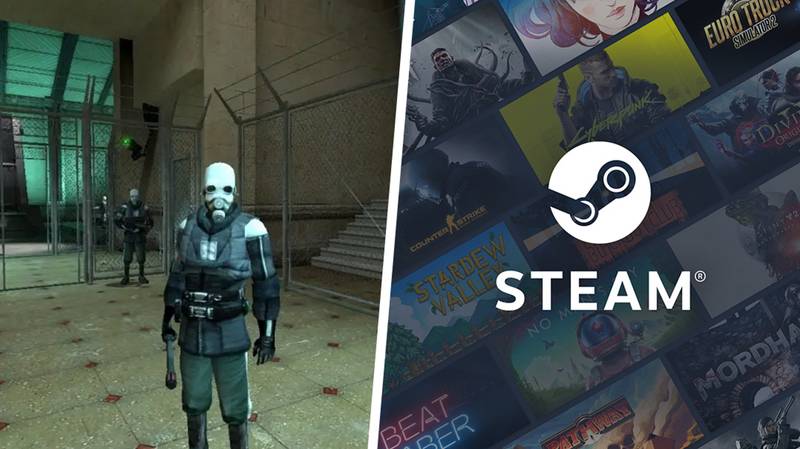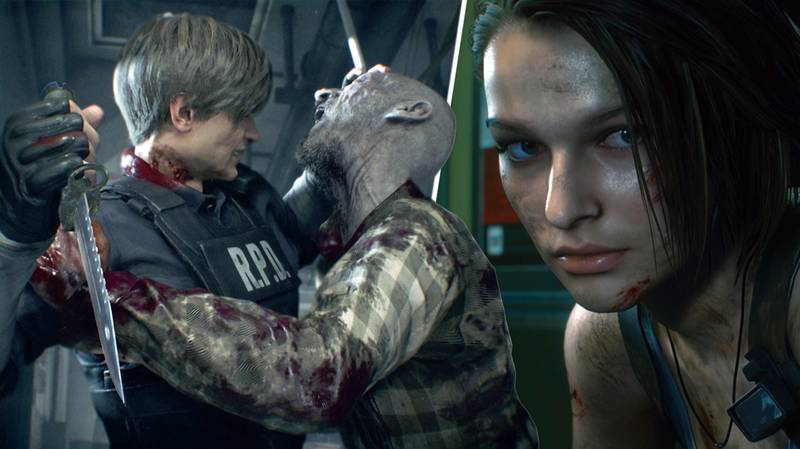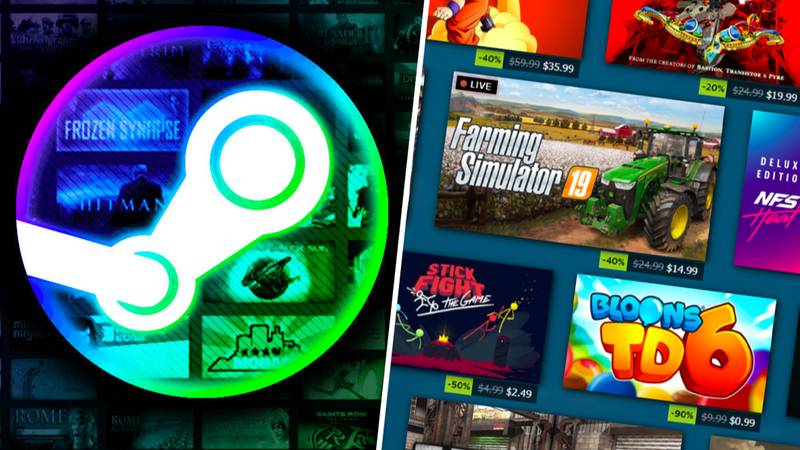Why Run A Video Games Magazine In 2021?
Published
| Last updated
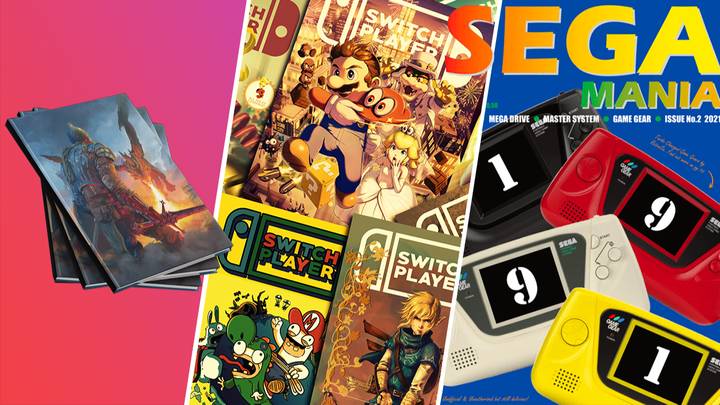
Featured Image Credit: Lost In Cult, Ninty Media, Sega Mania Magazine
The last few years haven't been kind to newsagent shelves. In the music sphere, Q magazine closed in 2020, and NME ceased to be a paid-for print publication in 2018. Countless lifestyle magazines have folded in the last decade or so - and when it comes to games, several famous names are no longer with us. The first British games magazine, CVG, ran from 1981 to 2004. GamesMaster magazine, established in 1993, closed in 2018 alongside its Future plc partner GamesTM (2002-2018). Official Nintendo Magazine went in 2014, and Official Xbox Magazine in 2020, while Official PlayStation Magazine reinvented itself, license-free, as PLAY in June 2021.
EDGE, PC Gamer and Retro Gamer continue to arrive in corner shops and supermarkets alike, and Wireframe can be found if you look hard enough, but it's tough out there for print. So tough that you'd wonder what's really in it for anyone running a gaming magazine in 2021, in the face of so much competition from online sites, social media channels, YouTube and other video formats, and everything else that consumes our time and money in the here and now. Why do this, when you could be doing something with vastly superior potential audiences, something that wasn't primarily active in an evidently shrinking area of the media? Something where deadlines come quickly and stress levels rarely simmer down, and so much of what's in your pages has, some of the time, already been shown to the virtual world, days or weeks before?
We spoke to three publications offering in-print video gaming coverage, that don't currently even make it to those same shelves as Retro Gamer and EDGE. These are the enthusiasts, the dreamers and the schemers, who want to bring a little of what we've lost on paper back to the present day. They're using Kickstarter and other crowd-funding platforms to build small but loyal communities of readers. Some are further along that journey then others; but they're all here, below, to answer: why do this, now?
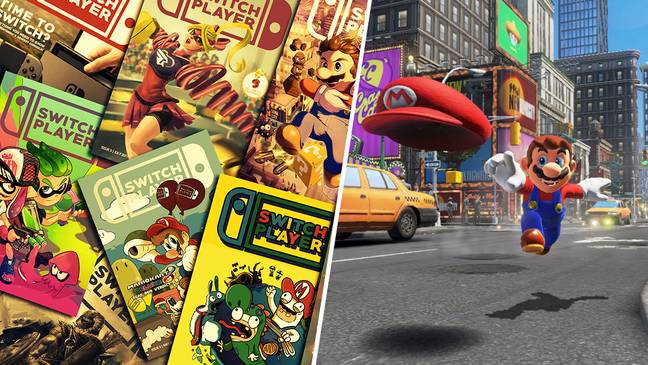
Switch Player is a monthly magazine covering everything to do with Nintendo Switch, filling the void left behind by the closure of Official Nintendo Magazine. It's an A5-sized magazine that runs to 60 pages per issue, and uses Patreon to aid its production. Copies are also available via an online store for £3.49 per issue. Switch Player was launched in 2017, alongside the Switch itself, and its most recent issue at the time of writing, issue 54, focused on The Legend of Zelda. The Switch Player team also produces a larger, quarterly magazine called Ninty Fresh, which sells itself on covering everything Nintendo "from NES to now", and offers 100 pages for £5.49.
Paul Murphy, executive editor: Switch Player is actually my second magazine, and the evolution of Vitamag, a small fanzine we produced that was dedicated to the PlayStation Vita. Nobody was covering that little powerhouse of a handheld outside of dedicated enthusiast ventures. It ran for 26 issues in total and all of what we learned - good and bad - went into the design and DNA for Switch Player. You have to continually be looking to improve and evolve, and our ethos is to ensure that the next issue is better than the last, so that you are constantly improving and challenging yourself. It seemed logical at the time to make a niche medium to cover a niche system! Switch Player is engineered to be cost-effective and we have no huge corporate overheads, so as long as we have the backing, we can continue.
Benjamin Hayhoe, managing editor: The reception to Switch Player magazine is always amazing, and we're so thankful to have such a brilliant readership that continues to support and fight the good fight for physical print media. Our front covers have become a focal point, and the reception to those reveals on social media can really skyrocket. We want to ensure that we backup all the flashy artwork with quality content, and that positive reception once the magazine is released confirms that we're doing that. And then we can breathe.
Switch Player has worked as a Patreon subscription for many years, and that's a really effective model for steadily managing your readership. Ninty Fresh, however, utilises Kickstarter, and that was a completely different challenge for us. When we launched Ninty Fresh, we had Switch Player behind us, so people knew that they would be getting a product from the same team, but we were still blown away by our first issue support when nobody had yet seen an actual Ninty Fresh product. It just goes to show the energy, the desire, and the faith that the Nintendo community has in these independent projects, But I think that people recognise when something is a project of passion and not just a business venture. They know we're all just a bunch of nerds that love Nintendo, and they know that we wouldn't want to do anything that let them down.
Paul Murphy: I've always said that to stand out, you need to be better than the competition, or be different. It's so easy to get lost in the online world, and for your words and features to be skipped, scanned, saved for later and never revisited. It's all so fast-paced. With a magazine, especially with a dedicated, crowd-funded audience, you are going to have eyes only on your content.
---
Related: watch five memorable moments from the Legend of Zelda series...
Loading…
---
Benjamin Hayhoe: For us, the magazine is the product. We have amazing writers and artists and the content is fantastic, but we want everyone to hold that in their hands - to breathe in the fresh ink and run their hands over art that looks as if it could jump from the page. We love to see readers taking photographs of their Switch Player collections stacked proudly in display cabinets and on shelves. We make art prints available from our issues, and it's amazing to see people frame them and put them up on their walls. Ninty Fresh even has a spine design that completes a little more with each issue, and seeing those lined up together by our readers is such a sight to behold. Everything is designed around this being a physical product. We're reaching out to a group of people, much like ourselves, that really miss when magazines were a part of everyday life.
Paul Murphy: My teenage years were fuelled by [games magazines like] Mean Machines, CVG, Total!, Super Play and the original Nintendo Official Magazine. There's a fine line between evoking that nostalgic feeling and being an homage and completely ripping something off. The beauty of Nintendo as a platform is that it has a rich history of software and systems, and playing those games again - or reading about them - transports you back to those times. Magazines were always an escape for me, and I hope that our publications offer that to our readers.
Benjamin Hayhoe: The day when issues start arriving at people's doors is always incredibly exciting. For me, personally, I love seeing the page designs come together in the final build. Once you have all of the words in and edited, the art commissioned and delivered, and everything is assembled on the page to complement one another perfectly, it really is just the most inspiring sight. You always have a vision, and the talents of the entire team make that vision a reality. You feel proud; you feel emotional. You know that when readers turn the page, this is what they're going to see. And if you've done your job right, you know they're going to go crazy for it. That's a brilliant feeling.
Paul Murphy: There are not many better feelings than seeing other print magazine aficionados appreciating what you've spent four to eight weeks working hard to produce. I'm just a guy with an idea, and I've been to Gamescom, Nintendo UK, numerous indie studios - massive shout out to Roll 7! - and I've met some incredible people along the way. I've interviewed Suda51, twice! That's all a little surreal. Ultimately, it's when you meet someone in person that says, "I'm a supporter and I love what you do" - that essentially validates that what you are doing means something to someone.
Luckily, we have now attracted two audiences, that have minimal overlap, and that are essentially subscriber bases. We couldn't do this without their belief, kindness and generosity. My overall dream is to see the things we make in the shops, but I'm not having much success achieving that, yet. Ninty Fresh was the magazine I always wanted to make, a fusion of retro and current Nintendo coverage, and with the loss of OXM last year I would love to explore the possibility of filling that space. But right now the focus is on making these things the absolute best that they can be, surpassing the ones that preceded them, and hoping we can attract a few more readers along the way.
Benjamin Hayhoe: I really love what's been going on with PLAY magazine recently. Coming off the back of OPM, they've really found their own striking new style for PlayStation print media. Their designs are gorgeous and the quality is excellent. Super chuffed for them right now. I'm also really loving to see From Gamers Magazine garner some attention - another great little passion mag that deserves some love.
As for us going forwards, in the words of Terry Pratchett: "Only in our dreams are we free. The rest of the time we need wages." We have huge dreams, but we also want to continue these magazines for a long time to come - we all want to see that complete Ninty Fresh spine collection, right? It's the support of all our readers that keeps us going - we couldn't do it without them, and we will continue to deliver the quality product that they deserve. Saying that, we do have some irons in the fire... We can't say much now, but we're all very silly and like making work for ourselves, so we've always got our sights keenly on the next project!
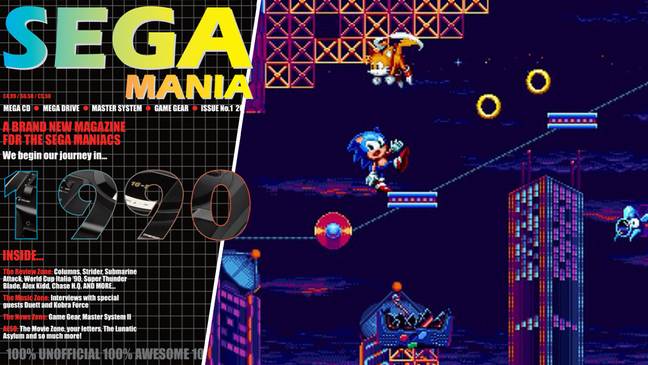
Sega Mania is a brand-new magazine focused, as its name suggests, on everything to do with SEGA consoles and games. It's not quite retro-only, with space in its first issue afforded to the 'DX' version of Alex Kidd in Miracle World, and words on Streets of Rage 4. However, much of what's featured across its 56 pages is focused on old-school gaming, with a particular emphasis on Mega Drive titles of 1990. This is very much a fan-written magazine, and as such lacks some of the professional polish seen in Switch Player and [lock-on]. However, the passion is clear to see on every page, and with a cover price of £4.99 it offers an awful lot of SEGA nostalgia for a very modest sum.
Tim Hugall, editor: The positive reaction to the first issue has been incredible. People are ordering from all over the world - from the UK, Europe, USA, Canada, Australia, Japan and even Brazil, and that's presented us with a lot of challenges. I was really nervous about putting our work out into the public arena, as I was worried it wasn't quite good enough. That's not a reflection on Sam (Forrester) and Simon (Pike)'s writing, which is excellent, but more to do with how it didn't quite turn out the way that I originally envisaged due to my own limitations and a few hiccups here and there. However, everyone seems to love it and that's really great - and now that we've learned so much in the process of doing issue one, issue two is going to be even better.
The original idea for Sega Mania came about over a year ago but kinda sat on the sidelines as a thing we'd maybe get around to one day. But once we saw that other indie mags in the same space were launching with great support, we thought right, let's pull our fingers out and get started!
We do offer a digital version, but it's all about print at the end of the day. Feeding our readers feelings of nostalgia is our main USP. Back in the day, your local newsagents was the only place you would be able to find out about games for your favourite system. So we're trying to bring that experience back again - not only for those who remember those days fondly, but also to new audiences who may have missed out on that magic the first time around.
---
Related: watch our Gamescom 2019 interview with Yakuza series producer
and SEGA veteran Daisuke Sato
Loading…
---
When we first started the magazine we really had no idea if people would get why we're trying to do this, but looking at all the feedback we have received, people are loving it. We've really tried to capture the essence of those old gaming mags from the '90s - we definitely draw influences from old and sadly now defunct gaming magazines such as Sega Power, Mean Machines, Sega Pro and GamesMaster - and people are really picking up on that. If we'd tried to do the same thing online we think it would have just gotten lost in the wash of endless sites focusing on the retro market. That's not to say that those sites aren't great, they are, but we just wanted to try something a little different, and we're pleased to say that it's working.
I love designing the layouts and themes. It's hard work, but really good fun trying to make the pages carry the theme of the game that's being discussed, and I'm always learning too so that each issue is getting a little bit better, and it's really rewarding to see the mag improve as my skills improve. The other team members, Sam and Simon, are getting a real kick out of writing. Both of them work in industries where they're either writing about local muggings or traffic violations in their day to day, so this opportunity to write about something they really love has become a great experience for them.
Without our dedicated community members, we simply could not exist. All of our readers deserve massive amounts of our respect and thanks. As a small team who hasn't really done anything like this before, the fact that people are willing to put their faith in us, even when we sometimes ship late or screw up an order due to the learning curve involved, is incredibly humbling. We're always working hard to make sure that every single customer is treated with the utmost care, and we are fully open to people engaging with us on a one-to-one basis. If we ever get to the point where people have to wait three days or more for a reply from us, then we've failed in our mission. We are completely dependent on the community to survive and we never forget that.
We'd love to be on store shelves - that would be the dream, to finally put a Sega magazine back in the shops like they used to be. Although we are available in very limited quantities in some local indie shops, to go national would be the big one. But the journey to get there is one we're just not ready for right now. We also have some other spin-off ideas which involve physical products outside of the magazine space but within the Sega Mania universe, but these are at the back of our minds right now. The core focus is the magazine, and although it's easy to get distracted by new shiny toys, especially on the more difficult days, it's imperative that we put 100% of our effort into the magazine to make sure it is the best it can be and what our fans expect.
We're just three guys doing the best we can with what we have. That's not to say that we don't have to think about finances and production volume, as we do, but we keep it simple. And seeing as we don't make a profit on the magazine and don't intend to, it's fairly easy to be realistic with our expectations of what we can and can't achieve. As long as people are enjoying it, and as a result ordering enough copies for us to carry on printing, then that's all that matters to us.
![[lock-on] / Credit: Lost In Cult, Capcom](https://images.ladbible.com/resize?type=jpeg&quality=70&width=648&fit=contain&gravity=null&url=https://s3-images.gamingbible.com/s3/content/e09e1db06116e2d38d4da9bf265d0930.png)
[lock-on] is a new video gaming journal printed on heavyweight stock and containing rafts of exclusive artwork accompanying its many and varied features - which for July 2021's volume one (001) contain a focus on the original PlayStation and some of its iconic titles (and ad campaigns), Hades, the games of Housemarque, the GameStop shares situation, and Resident Evil. Its first volume was funded on Kickstarter, and copies are on sale at publishers Lost In Cult for £20 (a digital edition is available for £18, and a limited hardback version sold out at a cost of £55). Volume two is in production and will be available in both standard and hardback editions.
Andrew J Dickinson, editor-in-chief: I came into the fold as editor-in-chief after the Kickstarter campaign for Volume 001. Jon Doyle - the creator of [lock-on] and our creative director - and we have known each other for a couple of years. I was involved to begin with as an adviser and writer for the project, having successfully funded two of my own Kickstarter campaigns. Jon has been talking about a project like this since I've known him though, and seeing a lack of representation in the printed media space for something premium, art-focused and filled with thoughtful articles really spurred him on. That, and seeing the rise of indie publications in recent years really encouraged him to realise his dream.
We were incredibly happy with the response that Volume 001 got - it was beyond our expectations, honestly. We made a decision a few months ago that we wanted to be a quarterly publication, so right now as I type this we're putting together the Kickstarter for Volume 002. No rest for the wicked! Beyond that, we've already confirmed the vast majority of writers and their articles for Volume 003, and have started thinking about Volume 004 as well, and getting to read through pitches and see them come to fruition has been really fulfilling. Then, seeing them laid out uniquely in the pages of the journal with bespoke artwork brings that sensation full circle. It's pretty exciting!
I think EDGE has certainly been an influence on what we do, especially their more explorative pieces, while publications such as Little White Lies, which is a premium journal about film, really inspired the design-led ethos we have. The internet is so ubiquitous now, meaning magazines like those are incredibly niche - but go back 25 years and the opposite was true. So part of what we're doing is nostalgia, wanting to revisit that moment in time when sitting down with a new magazine was an experience. There's something about that feeling which taps into the same part of the brain as buying and playing a vinyl record, I feel. Removing oneself from the digital world for just a little while to be fully immersed in something, there's nothing quite like it.
---
Related: watch our video on the evolution of Resident Evil
Loading…
---
I love music streaming services and online gaming outlets - they form a part of my everyday routine. But being able to step away from the information overload of the internet now and then to truly enjoy something is hugely appealing to me, and to many others too it seems. Plus, it's an incredibly tactile experience that employs more of your senses, such as touch and smell - [lock-on] smells fantastic, by the way! (It does.)
Magazines produced by larger publishers have got to make money through advertising, and need to maintain good relationships with studios and game publishers, which affects their layout and content. That's all well and good, but many people aren't seeing their interests represented well enough in these traditional publications - which is why indies like Switch Player and A Profound Waste Of Time appeared and got traction. They are appealing to a gaming niche that has unfortunately become unprofitable for the mainstream.
This rise of indie, boutique magazines also coincided, and was helped along greatly, by the rise of crowdfunding. Suddenly you could have an idea for something and ask people to fund it without them seeing the final product first. People were buying into your vision, and it allowed for a great deal of creative freedom, to not be burdened by advertisers or industry expectations. Over time, backers of these became discerning and they can now spot a project worth supporting from a mile away. You can't go in with a basic idea and nothing to back it up - you need to have a clear vision and tick boxes that give your backers confidence in you. So it is hugely important to have that group of people, the enthusiasts, because without them we simply would not exist.
I am very excited to see how [lock-on] grows and evolves over time. I know that Jon has grand plans for our parent company Lost In Cult down the line, perhaps expanding to look at other products to publish, and not necessarily magazines. We already have big plans for the Volume 002 Kickstarter now that we have announced our crowdfunding-exclusive companion collectable card game, [versus]. Beyond that, I absolutely have an idea in mind for another magazine in the distant future. That idea has been percolating for a while between myself and a friend, so when the time is right you may see another indie magazine spring onto the market published by Lost In Cult. Until then though, I am all about [lock-on] - my life practically revolves around it right now!
Thanks to all of these magazine-makers for taking the time to speak with us - it's an exciting time for independent gaming publications, which cover a wide range of styles, content and collectible value. Please click the links on the magazine titles to find out more. Copies of Switch Player, Ninty Fresh and Sega Mania purchased by the author; Volume 001 of [lock-on] provided by Lost In Cult. Composite images by James Daly.
Topics: Sega, Nintendo, PlayStation, Interview, Retro Gaming






